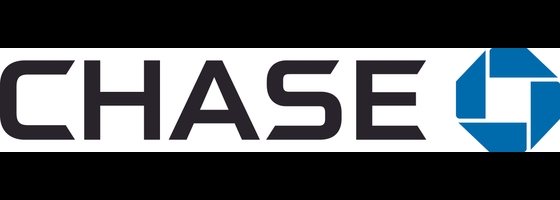Our evaluations and opinions are not influenced by our advertising relationships, but we may earn a commission from our partners’ links. This content is created independently from TIME’s editorial staff. Learn more about it.
While most adults likely have a single checking account, no rule says you can’t have more. You can have as many checking accounts as you want. Keeping track of multiple accounts is more complicated than a single checking account. However, opening and using multiple accounts can help you better manage your budget, cash flow, and other financial needs.
Here’s a closer look at how many checking accounts you may want and how to build the ideal setup for your financial needs and goals.
 |  |  | |
|---|---|---|---|
| Title | Axos Rewards Checking | Sofi Online Checking Account | Chase Total Checking® |
| APY* | Up to 3.30% | 4.60% | N/A |
| Min. deposit | $0 | $0 | $0 |
| Monthly fee | $0 | $0 | $12 (waived in several ways) |
| View Offer | View Offer | View Offer |
*New and converted accounts will not be charged a Monthly Service Fee for at least the first two statement periods. After that the Monthly Service Fee will apply unless you meet one of the ways to avoid the Monthly Service Fee each statement period (if applicable).
Should you have more than one checking account?
Everyone’s finances are unique, so there’s no universal answer on whether you should have one checking account or multiples. You could start by considering how you might use each checking account to meet specific financial needs.
For example, a person might use two checking accounts to help budget for different expenses. You could have one checking account dedicated to housing expenses and automatically deposit a certain amount from each of your paychecks into that account to cover your rent or mortgage payments, utilities, and other housing-related expenses. Do that and you can rest easy that you’ll never be short when the rent or mortgage is due.
Other reasons to have multiple accounts would be to separate business income and expenses from personal expenses, even for a small side hustle. Alternatively, if you’re in a long-term relationship or married, you could each have a personal checking account, plus a joint account for shared expenses.
If you’re concerned about fraud or being locked out of an account for any reason, you could keep a second checking account with enough cash to cover your expenses as a backup. Meanwhile, if you have high cash balances in bank accounts, you might want to spread cash among different banks to maximize FDIC coverage.
Another reason to have multiple accounts could be to take advantage of different services at different banks, such as online banking features, interest rates, and other perks or services.
This is far from an exhaustive list. If you can think of a reason why an additional checking account, or more, would be helpful to you, you’re probably right.
Multiple checking accounts: pros & cons
If you’re new to opening multiple checking accounts, here are some pros and cons to consider:
| Pros | Cons |
|---|---|
Separates your cash for specific needs and goals | Is more complicated to keep track of your finances |
Removes the temptation to spend the money needed on something else | Potential for fees if you go under a certain balance or use fee-bearing features with an account |
Can earn higher interest rates by putting your cash in the best high-yield checking accounts | Moving funds between banks is slower than moving them within the same bank |
Increases FDIC Insurance coverage | Multiple online and mobile banking logins and passwords are more complicated to manage |
How to use multiple checking accounts to stay on budget
No matter your income, a budget helps keep your spending on track and aligned with your values. If the word “budget” brings up negative connotations, think of it as a spending plan. Follow these five steps to use multiple checking accounts to stay on plan.
1. Categorize your expenses
List all expenses and divide them into main categories. Depending on your budgeting needs, they could be very granular, such as restaurants, groceries, and fast food. Alternatively, you could put groceries and dining into a single category. Budgeting is a good practice and even more important if you use one checking account.
2. Open checking accounts
Open a separate checking account for each budget category you want to keep out of your general spending account. Categories such as living expenses, travel, or bills could be good candidates for having their own accounts.
3. Automate deposits
Set up direct deposit or automatic transfers from your paycheck into each account based on the portion of your income you want to allocate to each category. Depending on your employer’s payroll system, you may be able to allocate funds by dollar amount or percentage of your paycheck.
4. Use each account as planned
Use the designated checking account for the intended expense category. For example, use your housing account to pay monthly bills and utilities related to housing and your travel account for flights, hotels, and other travel bookings.
5. Review and adjust as needed
Regularly check your balances and spending, and fine-tune your allocations as needed. Remember to maintain any required minimum balance to avoid fees. It’s fine to add or remove accounts or designate a checking account to another category when your needs change. Also, keep an eye out for fraud and unauthorized or unexpected charges.
How many checking accounts should you have?
Some people prefer to find the best checking account and stick with that one for monthly spending. Others prefer to use multiple checking accounts and dedicate each one to a specific spending category. That could mean having two, three, four, or even five or more checking accounts.
Some banks allow you to keep multiple checking accounts with the same institution, while others limit you to a single account of each type. Your favorite bank’s rules may inform your decision.
Nationwide banks such as Chase Bank and online banks—Axos Bank, for example—offer various checking and savings account options that could be a good choice. Ultimately, your personal financial needs and goals should guide you in choosing the best number of checking accounts for your household.
 |  |  | |
|---|---|---|---|
| Title | Axos Rewards Checking | Sofi Online Checking Account | Chase Total Checking® |
| APY* | Up to 3.30% | 4.60% | N/A |
| Min. deposit | $0 | $0 | $0 |
| Monthly fee | $0 | $0 | $12 (waived in several ways) |
| View Offer | View Offer | View Offer |
Managing multiple banking accounts
If you keep multiple accounts at multiple banks, it’s a good idea to use a money-tracking app or personal finance software to aggregate your financial information and give you quick access to all balances and transactions from a single dashboard. Depending on your needs, sites and apps such as Mint, Empower, and Lunch Money are good potential options.
When you’re limited to one checking account and want to stay with the same bank, consider adding its best savings account. Also, review the best high-yield savings account (HYSA) rates, certificate of deposit (CD) rates, money market account (MMA) rates, and any recurring fees or minimum balance requirements when deciding how to manage your money.
TIME Stamp: Multiple checking accounts can aid budgeting—or complicate it
Multiple checking accounts can help you budget by segregating business and personal finances, optimizing FDIC coverage, and leveraging different banking services. However, they can also complicate financial management, introduce the potential for fees, slow down fund transfers, and require handling multiple online banking logins.
The ideal number of checking accounts depends on personal financial needs and goals, as well as the rules of individual banks. To manage multiple accounts, consider using personal finance software or tracking apps, and explore HYSAs, CDs, and MMAs if restricted to a single checking account at your bank of choice.
Frequently asked questions (FAQs)
Are three checking accounts too many?
For some individuals or families, three checking accounts could be the perfect number. In theory, you can have as many checking accounts as you want, though some banks and credit unions limit the number of accounts of each type for their customers.
Is it safe to have three checking accounts?
If you can keep track of your transactions and account balances, it’s perfectly safe to have three checking accounts. Spreading your funds around can help with budgeting, maintaining FDIC coverage, and leveraging different banking services. It can also ensure you have access to funds if for some reason you are locked out of one of your accounts.
How many business checking accounts should I have?
Businesses can have multiple checking accounts. Large and complex businesses could need dozens of accounts for various purposes. Examples include accounts dedicated to operating income and expenses, payroll, taxes, owner draws or dividends, commissions, or specific budget categories.
The information presented here is created independently from the TIME editorial staff. To learn more, see our About page.

